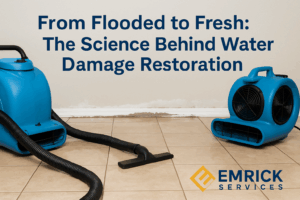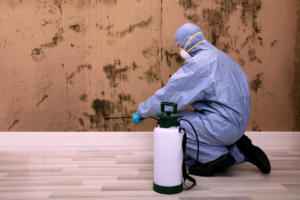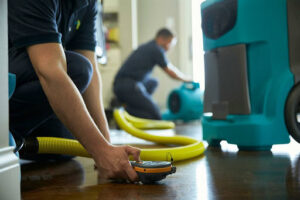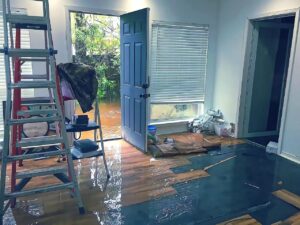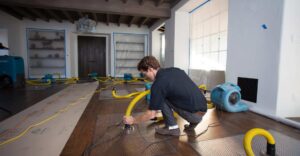With all the challenges that come with running a business, water damage is too often a liability that business operators are unprepared to deal with—until they don’t have a choice. This may be one reason why water damage causes $2.5 billion in property equipment damage in the U.S. each year.
Even tiny leaks can cause extensive damage to flooring, electrical equipment, and a building’s structure over time. However, if your business is negatively impacted by water damage, knowing what to do and the procedures to follow can help you deal with the problem quickly and minimize the damage and loss. Keep reading to learn more.
Understanding the 3 Types of Water Condition
Before you confront the water damage to your business, it is essential to be familiar with the water conditions you may encounter. They fall into three categories:
Keep in mind that Categories 1 and 2 can degrade into Category 3 water in a short period if left untreated or if conditions are unfavorable.
The Most Common Types of Water Damages
Some water damage comes from sources beyond your control, while others can be avoided. Nevertheless, the type of water damage should influence your restoration efforts. Here are the most common types of water damage that affect businesses.
Natural Disasters
Snowstorms, high tides, thunderstorms, and other natural calamities can cause severe floor and water buildup, often with plenty of Category 3 grade water. Floods account for 90% of natural disasters in the US and $17 billion in damages. Also, high winds and other foul weather can break windows and unhinge doors, causing the inflow of more water into your business.
Leaks from Broken Pipes
Major leaks cost businesses millions of dollars a year. Since many leaks happen behind walls and under floors, extensive damage can occur before you or your team discovers it. A leak from a ⅛ inch pipe can leak 250 gallons a day. If your place of business is located in a cold region, you run the risk of dealing with frozen pipes bursting and spewing large volumes of water before help arrives.
HVAC Floods
By dumping around 12,000 gallons of water, a broken HVAC system can cause severe damage to your production and productivity areas. It pays to maintain them adequately because 75% of HVAC systems fail within 12 years.
5 Steps to Effective Water Damage Restoration
Most of the time, the initial damage from a significant water breach is out of your control. However, you can take these 5 steps to help return your business to normal operations and reduce your losses.
1. Call Your Insurance Company and Emrick Services ASAP
Getting the funds to restore your place of business is essential to getting things back to normal. By contacting your insurance company within 24 hours, and working with Emrick Services your claim will be on file faster. This means that you’ll be able to get to work on restoring your business to its former condition.
You can prepare for disaster now by knowing who to contact after water damage occurs.
2. Have Your Damaged Property Inspected
Before any repairs begin, it’s important to select a water damage restoration contractor to inspect and assess the damaged area. The assessment report should include:
This inspection and subsequent report and quote may be required by your insurance provider before work can begin on your business.
3. Start the Drying Process
As soon as you can, start the drying process by clearing as much water as you can with rented air movers and dehumidifiers. Make sure that you set up the fans and movers in a way that creates cross currents throughout the damaged area. Once you have established an effective airflow pattern, let the equipment operate all day and night for about four days.
This should only be done in the case of Category 1 or 2 water damage. If Category 3 water is involved, you should keep all employees away from the area for safety reasons, and allow the professionals to get rid of the water.
4. Inspect the Electrical System
Since water and electricity are a dangerous combination, you’ll want to check the integrity of your electrical system before restoring power to your business. The best way to do this is by hiring a certified contractor who works with certified and journeymen electricians.
5. Finish With the Clean-up and Remediation
Mold can be a dreadful consequence of water damage long after the incident occurred. If you overlook it, mold will spread and become a severe threat to health and property value. But a competent restoration contractor can find the source of the mold and begin remediation during the restoration process to ensure that your business is safe when you and your employees return.
Moving Beyond the Effects of Water Damage
Of the physical adversities that could negatively impact your business, water damage ranks high on the list of calamities. However, by swiftly taking these steps toward restoration, you can lessen the extent of the damage and get back to work faster. Has your business suffered water damage? Let a reputable certified mitigation company take care of your water damage. Call Emrick Services today.



